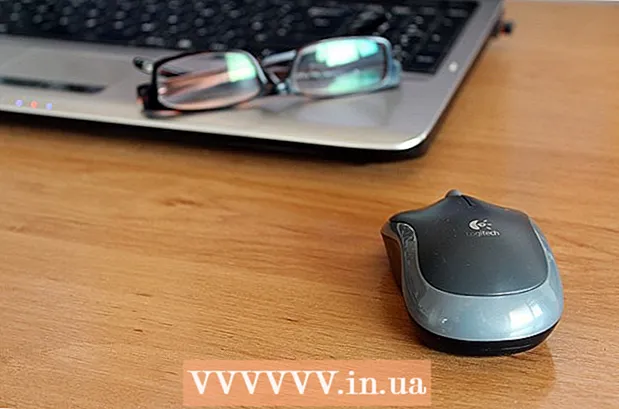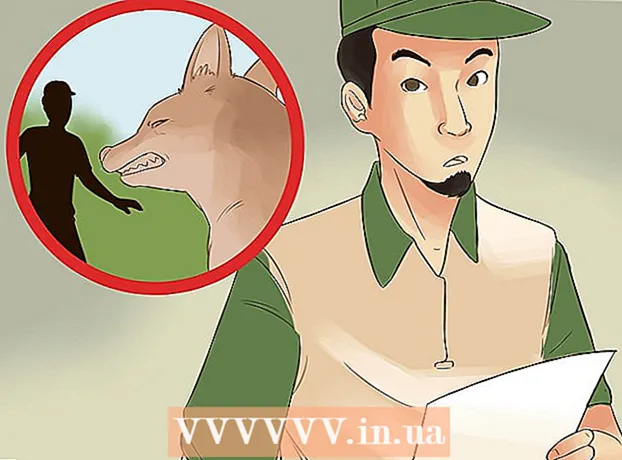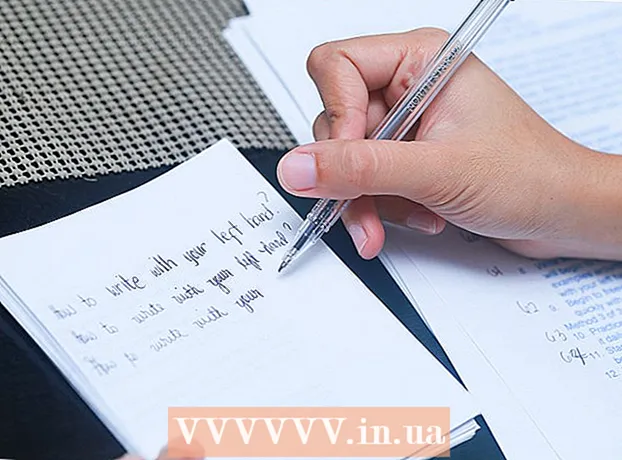
Content
The term "gesture sketch" has many different meanings, but they all have one thing in common - it is a quick sketch, the purpose of which is to capture the essence of the object to be drawn, and not to draw it in detail. Gesture sketching is often perceived as a learning tool, because it is difficult to imagine at least one art school that does not have classes on drawing people who change poses after 30 seconds. But beyond that, gesture sketching has many practical purposes. Thanks to the speed and style of gesture drawing, the artist learns to effectively capture movements and sketch their common features - this is a necessary skill in order to draw an animal or sketch a runner. Like nothing else, gesture drawing requires constant practice, and a couple of tips won't hurt you.
Steps
 1 Select a drawing object. In many curricula of art schools, the objects of gesture drawing are human figures, usually posing models. However, the drawing object can be anything - the main thing is that it has an entity that you would like to draw. At the initial stage, it is worth drawing static poses or stationary objects, but it is also worth trying to draw moving objects or people in motion. This is called dynamic painting - there is not much difference between it and gesture painting. They both focus on quickly drawing moving objects, but dynamic drawing focuses on the action of the object, and gesture drawing focuses on its essence. Sometimes action and essence are the same.
1 Select a drawing object. In many curricula of art schools, the objects of gesture drawing are human figures, usually posing models. However, the drawing object can be anything - the main thing is that it has an entity that you would like to draw. At the initial stage, it is worth drawing static poses or stationary objects, but it is also worth trying to draw moving objects or people in motion. This is called dynamic painting - there is not much difference between it and gesture painting. They both focus on quickly drawing moving objects, but dynamic drawing focuses on the action of the object, and gesture drawing focuses on its essence. Sometimes action and essence are the same.  2 Consider the drawing object. The most important part of gesture painting, like any art in general, is carefully examining the object you are drawing. It is not enough just to look at it - you need to consider it very carefully, not paying attention to anything else. Your eyes should become the lens through which the image is transferred directly onto the paper.
2 Consider the drawing object. The most important part of gesture painting, like any art in general, is carefully examining the object you are drawing. It is not enough just to look at it - you need to consider it very carefully, not paying attention to anything else. Your eyes should become the lens through which the image is transferred directly onto the paper. - Concentrate on the subject. Of course, you need to look down at the drawing from time to time, but it should only be a quick, not lingering glance. Some types of drawing require you to pay attention to the pencil and what you are drawing. But in gesture painting, you should keep your gaze on the drawing object as much as possible. Try to resist the temptation to look at the drawing.
 3 Define the main line of the object. We can say that each object has a specific line that defines its essence at any given time. It may sound too complicated, but all you need to do before you start drawing is to inspect the object and think about what it does, what it looks like and how it can be drawn in the easiest way. Imagine that you need to convey the essence of an object by drawing only one line. And then draw it. In the case of the human body, for example, this line may be an axis through the body. It can be curved or straight so that it reflects a person's posture and movement. Sometimes it may turn out that two lines convey the pose better than one.
3 Define the main line of the object. We can say that each object has a specific line that defines its essence at any given time. It may sound too complicated, but all you need to do before you start drawing is to inspect the object and think about what it does, what it looks like and how it can be drawn in the easiest way. Imagine that you need to convey the essence of an object by drawing only one line. And then draw it. In the case of the human body, for example, this line may be an axis through the body. It can be curved or straight so that it reflects a person's posture and movement. Sometimes it may turn out that two lines convey the pose better than one. - Concentrate on the tension in the human body. In living beings, one part or several parts of the body will always be the most active, most energetic. For example, when you wave your hand, the most active parts of your body will be your arm and hand. And when you stand still with your arms crossed over your chest, the area where the arms cross will seem the most energetic and tense, even though you are still. Focus on what makes this drawing object different from any other object you might draw (or what makes the object currently different from what it was before). This is what must be "caught" correctly in the drawing. If, as a result, you do not have time to finish drawing other parts, then it's okay.
 4 Draw with contour lines. When you draw a person's body, then his limbs, torso and head can be drawn with contour lines. To some extent, these lines are the contour of the human body, but they do not necessarily have to convey all the anatomical features. You draw the body with simple, single, contour lines, and because of this, the drawing is two-dimensional. Due to the fact that you are trying to quickly capture the essence of the figure, you do not have time to work out in detail the individual parts of the body. The contour lines simply show that these body parts exist and give only some indication of their position.
4 Draw with contour lines. When you draw a person's body, then his limbs, torso and head can be drawn with contour lines. To some extent, these lines are the contour of the human body, but they do not necessarily have to convey all the anatomical features. You draw the body with simple, single, contour lines, and because of this, the drawing is two-dimensional. Due to the fact that you are trying to quickly capture the essence of the figure, you do not have time to work out in detail the individual parts of the body. The contour lines simply show that these body parts exist and give only some indication of their position.  5 Give your figure weight. Any artist faces difficulties when drawing the volume of the body, when trying to show the weight of the body. One technique that is sometimes used in gesture drawing is to depict volume using circular motions. This is similar to drawing shadows, with the difference that we draw the volume quickly and not in detail. Of course, you can draw darker or lighter circles to show that somewhere there is more volume, and somewhere less, but, as a rule, it is enough for us to show that there is volume in this place of the figure. However, volume does not need to be shown everywhere. The entire human body is three-dimensional, but you don't want the drawing to be a jumble of circles. In a circular motion, mark the muscles, abdomen, buttocks, or any other area of the body that stands out. Instead of circles, you can use lines (as when drawing shadows) or combine lines with circles.
5 Give your figure weight. Any artist faces difficulties when drawing the volume of the body, when trying to show the weight of the body. One technique that is sometimes used in gesture drawing is to depict volume using circular motions. This is similar to drawing shadows, with the difference that we draw the volume quickly and not in detail. Of course, you can draw darker or lighter circles to show that somewhere there is more volume, and somewhere less, but, as a rule, it is enough for us to show that there is volume in this place of the figure. However, volume does not need to be shown everywhere. The entire human body is three-dimensional, but you don't want the drawing to be a jumble of circles. In a circular motion, mark the muscles, abdomen, buttocks, or any other area of the body that stands out. Instead of circles, you can use lines (as when drawing shadows) or combine lines with circles.  6 The hand should move. The hand must move throughout the gesture drawing. You have to let the image pass through your eyes straight to the paper without thinking about it. As soon as you stop your hand, you immediately drop out of the drawing process and start thinking.
6 The hand should move. The hand must move throughout the gesture drawing. You have to let the image pass through your eyes straight to the paper without thinking about it. As soon as you stop your hand, you immediately drop out of the drawing process and start thinking. - Hold the pencil gently, the movements should be smooth. Sometimes artists use gesture painting as a warm-up before other types of painting, as during it the muscles of the arm and hand are "warmed up". This is because you are simply letting go of yourself.Relax and let your hand move freely.
- Limit the time you spend drawing parts of the shape. Not only should you not stop, you also should not linger too long in one part of the figure. Try limiting the time for drawing one part of the shape to 5-6 seconds. During this time, try as best as possible to "grasp" a part of the figure and draw it, and then move on to the next part. You can "jump" from feet to hands, then to your head - draw the part on which your gaze falls. And don't worry about keeping a logical order or getting everything to fit together perfectly.
 7 Set a timer. When gesture drawing is taught in art school, the sitter changes position in the interval from 30 seconds to 2 minutes. This is a great workout to learn how to draw quickly and, more importantly, quickly identify the essence of the drawing object. This exercise also has a practical benefit: when you try to draw a butterfly in nature, you never know how much time you have before it flies away from you forever. Think of gesture drawing in the same way - you are trying to draw a person or object and depict its essence in an instant. A minute, a second, you blink - and everything will be different.
7 Set a timer. When gesture drawing is taught in art school, the sitter changes position in the interval from 30 seconds to 2 minutes. This is a great workout to learn how to draw quickly and, more importantly, quickly identify the essence of the drawing object. This exercise also has a practical benefit: when you try to draw a butterfly in nature, you never know how much time you have before it flies away from you forever. Think of gesture drawing in the same way - you are trying to draw a person or object and depict its essence in an instant. A minute, a second, you blink - and everything will be different.
Tips
- Date pictures so you can track progress.
- During gesture drawing, people often hold the pencil further than usual, sometimes in the middle. This allows for smoother, more flexible movements while maintaining control.
- Many artists find that finding the main line, which we described above, makes it easier to draw further, because after finding this line, it becomes easier to place other parts of the shape. This line does not have to be drawn at the very beginning, and many artists draw it later. If you were able to grasp the "essence" of the object, then it will be clear where this line goes, even if it is not drawn.
- Signature drawing is a great way to understand human or animal anatomy and the "skeleton" of moving objects such as cars or machinery. The more often you draw them, the better you will begin to feel their shape and range of motion, learn to see the "skeleton". That is why mistakes are not terrible in gesture drawing: every time you make a mistake, you learn to see the object better and draw it more correctly the first time.
- Just because you constantly have to move your hand does not mean that you have to do it as fast as a hummingbird flaps its wings. Relax, the movements must be correct and effective. The speed of drawing only in a small part depends on the speed of movement of the hand.
- Think of gesture drawings as independent works. Do them for their own sake. Many gesture drawings eventually develop into other types of artistic drawing, but it is not necessary to perceive gesture drawing as an introduction to something larger.
- Draw with thin lines. Remember, nothing can be washed. And yet you will constantly make "mistakes." Long bold lines are hard to ignore. Thin lines and circles can be drawn on top of each other, next to each other, or simply not noticed. If you managed to capture the essence of the figure in a limited time, then you can later return to it and work out some areas or outlines with thicker lines.
- There are a wide variety of tools available for gesture drawing. Crayons, pastels, ink, and watercolors can all be used to successfully draw gesture drawings.
- There are a wide variety of gesture styles. See how people paint in art courses, look at work in museums, and search the internet and you will find a huge variety of gesture drawing styles.
- Start redrawing images from books or the internet, and then learn to draw from your head. And don't forget to draw with thin lines and outline with bold later.
- Draw sleeping pets or babies. During sleep, they move, fidget, freeze in one position for a minute and turn over without even waking up. If they change the pose, try to finish the drawing from memory, or just leave it unfinished and start a new one.



